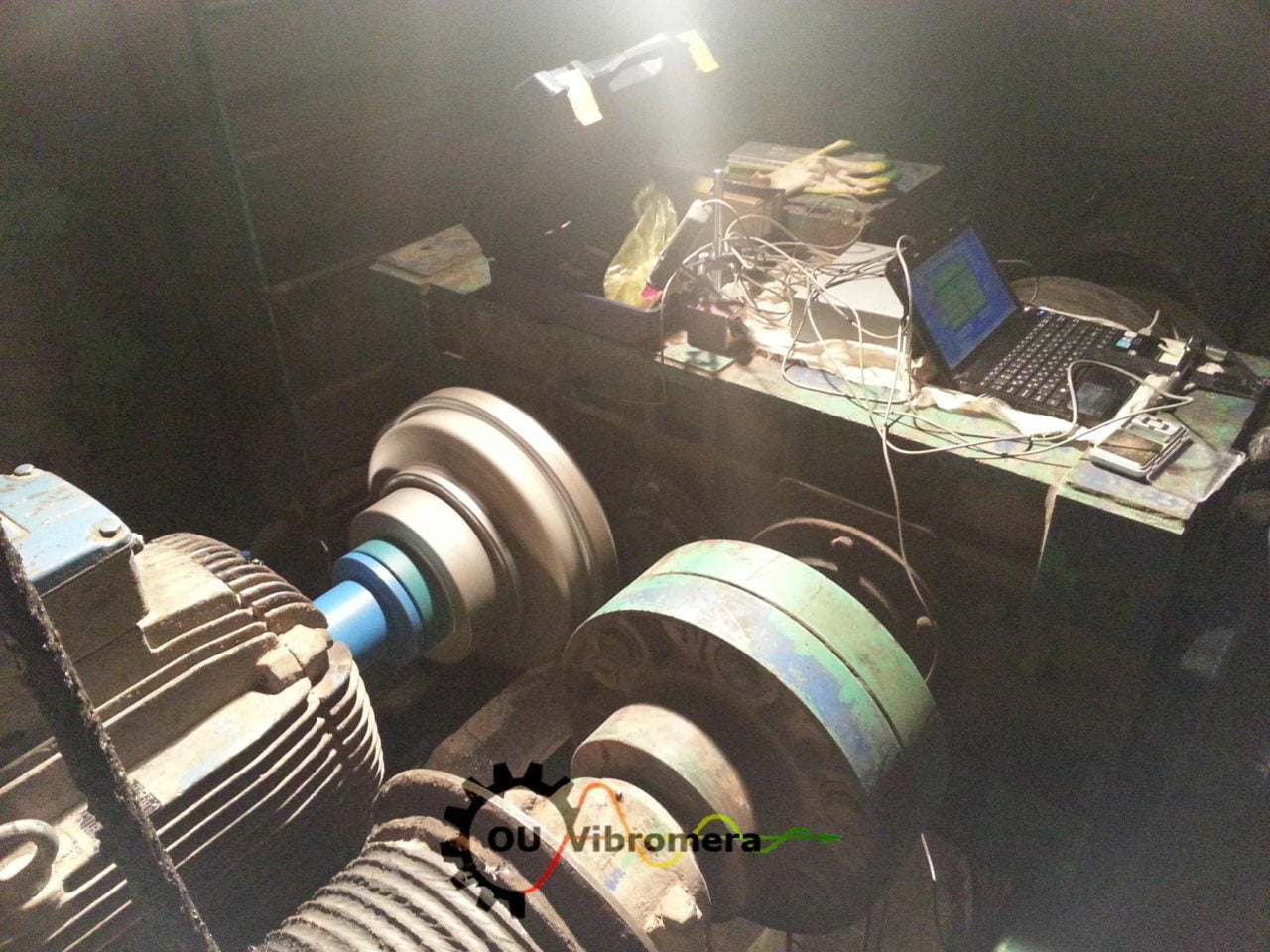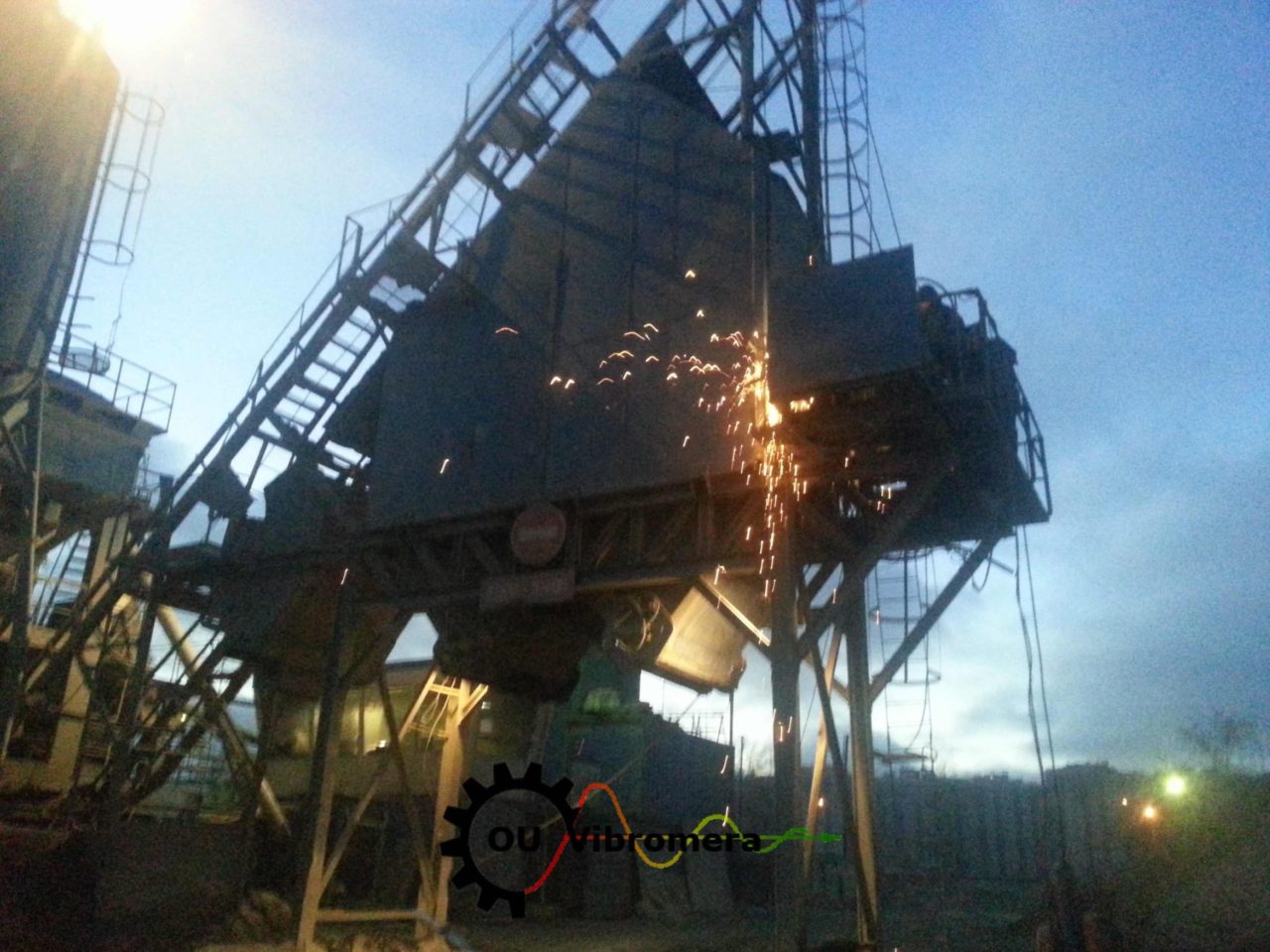Hydraulic Coupling Balancing at Asphalt Plant: Complete Technical Guide
Overview of Hydraulic Coupling Imbalance Issues
Hydraulic coupling systems in asphalt plants require precise balancing to maintain operational efficiency. Imbalanced hydraulic couplings generate excessive vibrations that compromise equipment performance and increase maintenance costs. This technical analysis examines a field balancing procedure using the Balanset-1A portable balancing device.
Key Technical Specifications:
- Equipment: Hydraulic coupling system
- Location: Asphalt production facility
- Balancing tool: Balanset-1A dynamic balancer
- Measurement type: Two-plane dynamic balancing
Technical Diagnosis of Hydraulic Coupling Imbalance
Hydraulic coupling imbalance manifests through multiple operational indicators that require systematic measurement and analysis:
Primary Symptoms of Imbalance
| Symptom | Impact Level | Consequences |
|---|---|---|
| Excessive vibration | High | Bearing failure, structural damage |
| Increased noise levels | Medium | Workplace safety concerns |
| Power transmission loss | High | Reduced production efficiency |
| Premature component wear | Critical | Unexpected downtime, increased costs |
Vibration Analysis Parameters
The diagnostic process involved measuring specific vibration characteristics using standardized protocols:
- Amplitude measurements in mm/s RMS
- Frequency analysis across operating RPM range
- Phase angle determination for correction weight placement
- Harmonic content evaluation for fault identification
Balanset-1A Dynamic Balancing Methodology
The Balanset-1A device provides comprehensive two-plane dynamic balancing capabilities for hydraulic coupling systems. The balancing procedure follows established ISO 21940 balancing standards.
Equipment Setup and Configuration
Balancing Setup Components:
- Vibration sensors positioned at bearing locations
- Laser tachometer for phase reference measurement
- Data acquisition unit connected to coupling system
- Software interface for real-time analysis
Step-by-Step Balancing Process
Phase 1: Initial Vibration Assessment
Baseline measurements established operational vibration levels across the hydraulic coupling system:
- Vibration amplitude recording at both measurement planes
- Phase angle determination relative to reference mark
- Operating speed verification and stability assessment
- Background noise level evaluation
Phase 2: Trial Weight Installation
The Balanset-1A system calculated optimal trial weight parameters:
- Trial weight mass: Determined by software algorithm
- Angular position: Calculated from phase measurements
- Radial distance: Based on coupling geometry
- Installation verification: Confirmed placement accuracy
Phase 3: Correction Weight Calculation
Final correction weights determined through influence coefficient method:
- Vibration response analysis after trial weight installation
- Influence coefficient calculation for both planes
- Correction weight magnitude and position optimization
- Cross-coupling effect compensation
Technical Results and Performance Metrics
Vibration Reduction Analysis
| Measurement Point | Before Balancing (mm/s) | After Balancing (mm/s) | Improvement (%) |
|---|---|---|---|
| Drive end bearing | 12.5 | 2.1 | 83.2 |
| Non-drive end bearing | 9.8 | 1.8 | 81.6 |
Performance Achievement: Vibration levels reduced to ISO 10816 Grade A standards, ensuring optimal equipment longevity and operational reliability.
Balanset-1A Technical Advantages
Measurement Accuracy and Precision
- Vibration measurement accuracy: ±5% across 0.1-1000 Hz range
- Phase measurement precision: ±2 degrees
- Temperature operating range: -20°C to +60°C
- Balancing quality grade: G0.4 to G40 per ISO 1940
Operational Efficiency Features
- Real-time data processing and analysis
- Automatic correction weight calculation
- Multi-plane balancing capability
- Comprehensive reporting and documentation
Preventive Maintenance Protocol
Scheduled Vibration Monitoring
Implementation of systematic monitoring schedules ensures early detection of hydraulic coupling imbalance:
| Monitoring Frequency | Measurement Type | Action Threshold |
|---|---|---|
| Monthly | Overall vibration level | >4.5 mm/s RMS |
| Quarterly | Spectral analysis | 1x RPM >3.0 mm/s |
| Annually | Complete balancing check | ISO 1940 compliance |
Cost-Benefit Analysis
Economic Impact of Proper Balancing
- Bearing life extension: 200-300% increase
- Energy consumption reduction: 5-15% improvement
- Unplanned downtime prevention: 80-95% reduction
- Maintenance cost savings: 40-60% annual reduction
Frequently Asked Questions
Q: What causes hydraulic coupling imbalance?
A: Common causes include uneven wear, manufacturing tolerances, thermal distortion, and contamination accumulation within the coupling system.
Q: How often should hydraulic couplings be balanced?
A: Balancing frequency depends on operating conditions, but annual checks are recommended for continuous operation equipment.
Q: Can Balanset-1A balance other rotating equipment?
A: Yes, the device supports balancing of fans, pumps, motors, crushers, and various industrial rotating machinery.
Q: What vibration levels indicate balancing requirements?
A: Vibration levels exceeding ISO 10816 Grade B thresholds (typically 4.5 mm/s RMS) require balancing intervention.
Technical Specifications Summary
Balanset-1A Key Specifications:
- Measurement channels: 2 vibration + 1 phase
- Frequency range: 0.5-40,000 RPM
- Vibration measurement range: 0-80 mm/s
- Phase measurement accuracy: ±1 degree
- Balancing accuracy: ±5% of residual unbalance
- Operating temperature: -20°C to +60°C
- Power supply: 12V DC or 220V AC
Conclusion
Systematic hydraulic coupling balancing using the Balanset-1A device provides measurable improvements in equipment performance, operational efficiency, and maintenance cost reduction. The documented case study demonstrates significant vibration reduction exceeding 80% improvement across all measurement points. Implementation of regular balancing protocols ensures sustained asphalt plant productivity and equipment reliability.
Professional balancing procedures following ISO standards, combined with advanced measurement technology, establish optimal operating conditions for hydraulic coupling systems in industrial applications. The Balanset-1A device offers comprehensive solutions for dynamic balancing requirements across diverse rotating equipment configurations.

